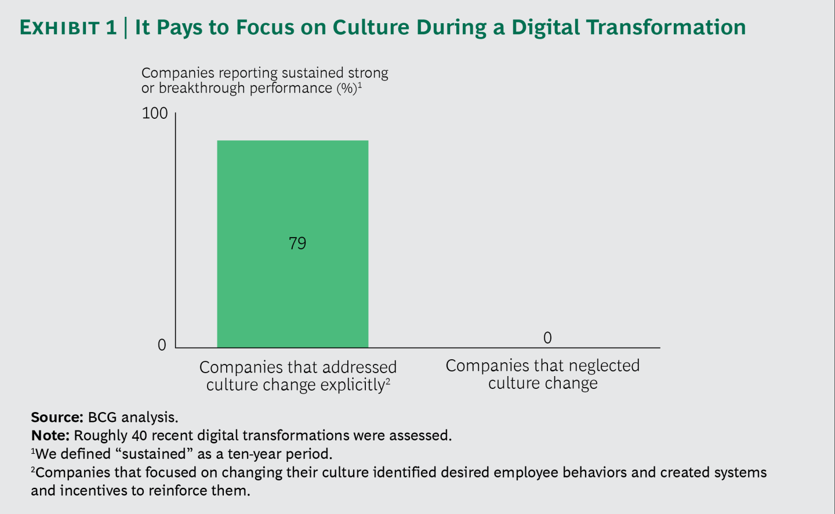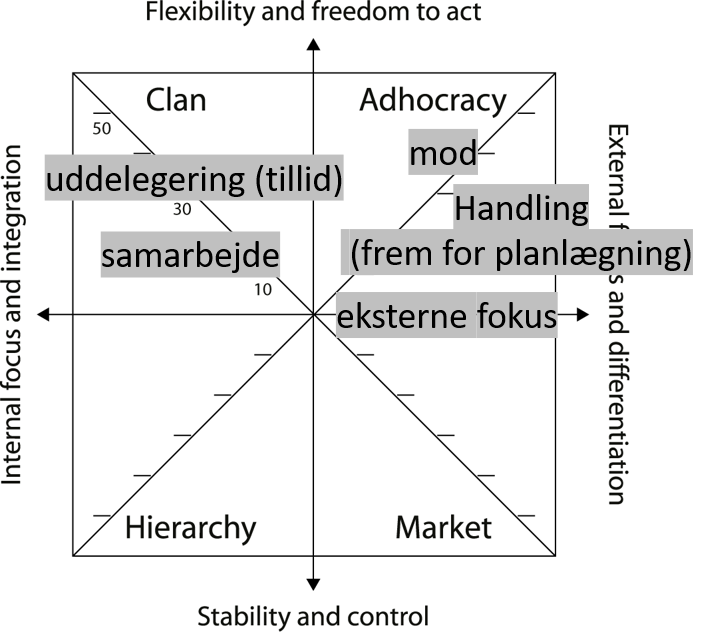Ingen digital transformation uden en digital kultur det er de fleste enige om. Men hvad er en digital kultur?
The Boston Consulting Group (BCG)[1] har kigget nærmere på det, og i den forbindelse bl.a. fundet ud af at det betaler sig at fokusere på kultur ifm. en digital transformation fordi knap 80% af de organisationer som gør, opnår vedvarende stærke eller markante præstationer – mod 0% af de organisationer som ikke gør – se figur herunder.
[1] It’s Not a Digital Transformation Without a Digital Culture. APRIL 13, 2018 By Jim Hemerling, Julie Kilmann, Martin Danoesastro, Liza Stutts, and Cailin Ahern

BCG opstiller følgende 5 karakteristika for en digital kultur som vi er ret enige i (selv om der naturligvis ikke findes en standard opskrift og det ikke er udtømmende):
- It promotes an external, rather than an internal, orientation. A digital culture encourages employees to look outward and engage with customers and partners to create new solutions. A prime example of external orientation is the focus on the customer journey; employees shape product development and improve the customer experience by putting themselves in the customer’s shoes.
- It prizes delegation over control. A digital culture diffuses decision making deep into the organization. Instead of receiving explicit instructions on how to perform their work, employees follow guiding principles so that their judgment can be trusted.
- It encourages boldness over caution. In a digital culture, people are encouraged to take risks, fail fast, and learn, and they are discouraged from preserving the status quo out of habit or caution.
- It emphasizes more action and less planning. In the fast-changing digital world, planning and decision making must shift from having a long-term focus to having a short-term one. A digital culture supports the need for speed and promotes continuous iteration rather than perfecting a product or idea before launching it.
- It values collaboration more than individual effort. Success in a digital culture comes through collective work and information sharing across divisions, units, and functions. The iterative and fast pace of digital work requires a far greater level of transparency and interaction than that found in the traditional organization.
Hvis vi kigger på overskrifterne; eksterne fokus, uddelegering (tillid), mod, handling (frem for planlægning) og samarbejde og sætter dem ind i Competing Values Framework (CVF) placerer de sig nogenlunde som herunder.

Altså skal I have en kultur som i høj grad ligger over den vandrette linje – har I det? eller kan I få det?
Har I endnu ikke fået målt jeres kultur kan du bestille en OCAI kulturmåling lige her.
